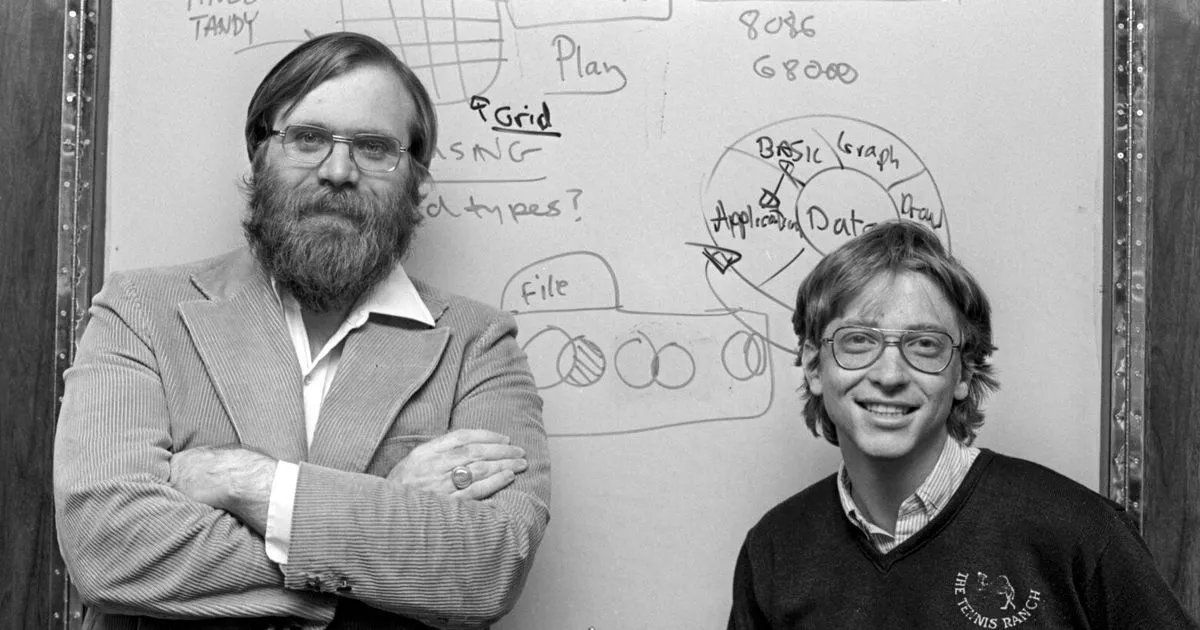
Fifty years ago, two visionary kids from Seattle transformed the tech industry forever. While major players in personal computing were fixated on hardware—specifically “microcomputer” technology—Bill Gates and Paul Allen recognized the crucial element that powered these machines: software. This groundbreaking idea, first discussed by Allen during a visit to Gates’ apartment in the Boston area, marked the beginning of Microsoft’s legendary journey.
On April 4, 1975, Gates and Allen officially launched “Micro-Soft” from a modest office in a strip mall in Albuquerque, New Mexico. Shortly after, they relocated to Bellevue, finally settling in Redmond. Over the ensuing decades, amidst leadership changes, intense government scrutiny, and billions in revenue, tens of thousands of employees contributed to Microsoft’s storied legacy—a legacy defined by innovation, disruption, and opportunity in the tech industry.
One of the early Microsoft employees, Scott Oki, joined the company as employee number 121. In those formative years, Gates was known for his hands-on approach and high standards. Oki recalls, “One of his favorite phrases was ‘that’s the stupidest thing I’ve ever heard.’” Fortunately, Oki avoided that critique, earning Gates’ approval when he proposed a global expansion plan just weeks into his role as marketing manager.
Despite lacking international business experience and not speaking another language, Oki was granted a $1 million budget to establish Microsoft’s international division. He successfully launched subsidiaries in key markets, including Japan, the United Kingdom, Germany, and France, with Australia added later. Remarkably, every initial subsidiary became profitable within its first year.
However, Oki faced challenges when he transitioned to the U.S. sales division five years later. While Microsoft dominated internationally, its products lagged behind popular word processors and spreadsheets in the U.S. To turn things around, Oki implemented significant changes, including layoffs and a shift in focus from the OS/2 operating system to Windows. His foresight helped Microsoft capture the application market, leading to its global dominance.
Brad Chase experienced a pivotal moment in Microsoft’s history when he had to fly back from Amsterdam, missing a Rolling Stones concert to secure the rights to the song “Start Me Up” for a Windows 95 commercial. This marketing campaign became iconic, showcasing Microsoft as a formidable player in the tech sector.
In the mid-1990s, Microsoft was evolving from a lesser-known company to a corporate giant. Chase recognized the need for a dynamic commercial that would resonate with consumers. The ad agency proposed a concept featuring various demographics using the new start menu feature, set to the backdrop of the Rolling Stones’ music. Despite the hefty $10 million licensing fee, Chase secured the rights to the song after intense negotiations.
The Windows 95 commercial, which began with a cursor clicking the start menu—accompanied by the unforgettable guitar riff—captured the imagination of viewers and introduced them to a revolutionary new interface. Chase flipped traditional tech marketing strategies by emphasizing transparency, ensuring consumers understood the product’s capabilities. Gates believed strongly in Windows, declaring, “We’re going to bet the company on Windows,” which proved to be a significant gamble.
Mary Snapp joined Microsoft in 1984, becoming one of the first female attorneys at the company. Her journey began when she moved to Seattle seeking a new environment and discovered a job opportunity in the tech industry. At Microsoft, Snapp was thrust into high-stakes legal matters, including the creation of MSNBC and the acquisition of Skype.
During her tenure, Microsoft faced numerous legal challenges, particularly during the antitrust investigations of the 1990s. The day the U.S. government sued Microsoft was a pivotal moment for Snapp, one that turned her world upside down for nearly a decade. Despite the intense scrutiny, Microsoft navigated through these challenges, ultimately settling with the DOJ, which led to cultural shifts within the legal division.
Jane Broom graduated from the University of Washington in 1992 with a passion for public service. Although initially skeptical about joining Microsoft, her career at the company allowed her to align her interests with community service. Broom eventually led Microsoft’s Partners in Learning program, aimed at enhancing digital literacy in schools.
As the Seattle tech scene flourished, Broom began to notice significant diversity gaps within the industry. Alarmed by the lack of representation in computer science, she became determined to drive change and ensure broader access to tech opportunities. Now with Microsoft Philanthropies, Broom supports various initiatives, including affordable housing and disaster relief, while continuing to advocate for diversity in tech.
From its humble beginnings to its current status as a tech powerhouse, Microsoft has not only shaped the software industry but has also created countless opportunities for individuals from diverse backgrounds. The stories of early employees like Scott Oki, Brad Chase, Mary Snapp, and Jane Broom exemplify the company's commitment to innovation, growth, and community engagement. As Microsoft continues to evolve, its legacy remains rooted in the transformative power of technology and the importance of fostering inclusive environments within the tech sector.